#Emperor Rudolf ii
Text

Bedřich Budil — Rudolf II of Habsburg (oil on canvas, 1985)
50 notes
·
View notes
Text

"Never apologise for burning too brightly or collapsing into yourself every night. That is how galaxies are made."
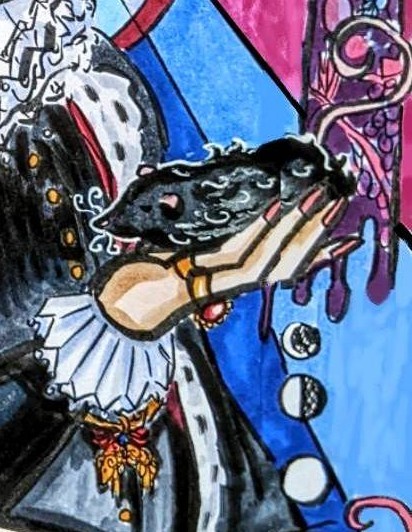

Vent piece lmao
#ok to reblog#Rudolf ii#Rudolph ii#Emperor Rudolf ii#17th century#Queer art#art noveau#habsburg monarchy#house of habsburg#So like. This came from a place of deep hurt but it's ok!!#Just a little something to celebrate the queer neurodivergent experience because it can be SO HARD sometimes </3#Anyway: lunar chart - astrology/astronomy special interest n symbol of madness#Green carnations n bg colours: mlm and bisexual pride respectively#Drips: patronage of art and alchemy#Fruits: arcimboldo portrait n art patronage again#Rat: unwantedness outsider status disease etc#It's also wonky on purpose bc ''"instability''' lmao
13 notes
·
View notes
Text
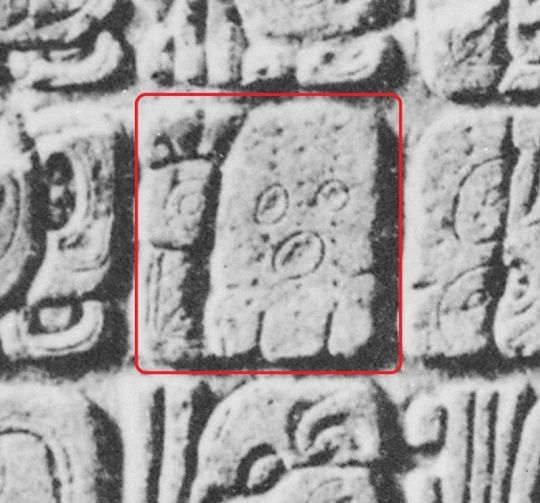




Royal Birthdays for Today, August 8th:
Casper, Maya Ruler, 422
Horikawa, Emperor of Japan, 1079
Rudolf II, Duke of Bavaria, 1306
Maria Alexandrovna, Empress of Russia, 1824
Beatrice of York, British Princess, 1988
#casper#emperor horikawa#rudolf ii#maria alexandrovna#princess beatrice#long live the queue#royal birthdays#Marie of Hesse
9 notes
·
View notes
Photo






HOUSE OF THE DRAGON + art (11/∞)
Emperor Rudolf II in Armour | Martino Rota
De Koning van Thule | Pierre Jean van der Ouderaa
Portrait of a Man in Armour with Red Scarf | Anthony van Dyck
#houseofthedragonedit#gameofthronesdaily#house of the dragon#otto hightower#daemon targaryen#hotd#hotdedit#art#painting#martino rota#pierre jean van der ouderaa#anthony can dyck#hotdart#*
150 notes
·
View notes
Text
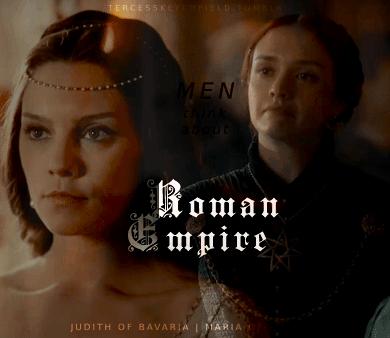
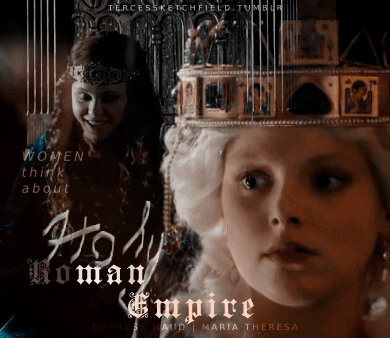
MEN THINK ABOUT ROMAN EMPIRE. WOMEN THINK ABOUT HOLY ROMAN EMPIRE
JUDITH OF BAVARIA (797-843) — Daughter of Count Welf I of Bavaria, Judith was a Carolingian Empress as the second wife of Louis I the Pious. Mother of Gisela and Charles the Bald, she foght for both her own influence at court and for the succession of her son over the claims of his elder half-brothers, the sons of Louis I from his first marriage. Charles became the Emperor in 875, after the death of Louis II, his nephew and a son of his half-brother Lothair / fancast: Annabel Scholey
MARIA OF AUSTRIA (1528-1603) — Daughter of Charles V, Holy Roman Emperor, and Isabella of Portugal. She served as Regent of Spain both jointly with her husband, Maximilian (before their accession to the imperial throne), and in person, for her father, and brother, Philip II. Her children include two Holy Roman Emperors, Rudolf II and Matthias, over whom she held great influence, and queens consorts of Spain, and France / fancast: Olivia Cooke
EMPRESS MAUD (1102-1167) — Daughter of Henry I of England and Matilda of Scotland. Her first marriage to the Holy Roman Emperor, Henry V, gave her the title under which she came down into history, and was a source of great pride to Maud. Rightful heiress of Henry I, she confronted her cousin, King Stephen, in the civil war, known as the Anarchy, fighting ferociously for her rights. She failed in this for herself but won for her son Henry, who became king and established the Plantagenet dynasty in England / cast: Alison Pill in The Pillars of the Earth (2010)
MARIA THERESA (1717-1780) — She succeded her father Charles VI as the ruler of Habsburg monarchy in 1740, and devoutedly defended it against its enemies in the War of Austrian Succession and the Seven Year's War. Wife of the Holy Roman Emperor, Francis I, she was a forceful personality and a competent ruler herself, reigning first in her own right, and later, jointly with her son Empreror Joseph II. Her children include two Holy Romam Emperors (Joseph II and Leopold II), queens consorts of Naples ans Sicily, and France / cast: Marie-Luise Stockinger in Maria Theresia (2017)
#historyedit#judith of bavaria#maria of austria#empress maud#empress matilda#maria theresa#maria theresia#perioddramaedit#history#women in history#perioddramasource#onlyperioddramas#tusereliza#userbennet#usermina#weloveperioddrama#cortegiania#perioddramagif#gifshistorical#my edit#*i have literally zero idea what is this lmao* but i really like it idk
113 notes
·
View notes
Text


Franz Joseph, Emperor of Austria, King of Hungary, etc. Reigned 1848-1916
Challenge: Talk about his reign without talking about wife a lot (impossible)
from anon:
Dual Monarchy. HELLO.
Constitution! (Italy immediately declared war after but ya know)
Survived assassination attempts
Doesn't lose territory to Prussian unification which is something I guess
Shares 2 names with Hayden
from @minetteskvareninova:
Franz Joseph propaganda (proper):
as much of a poor little meow meow as Joseph II.
also known as Starej Procházka (ask @archduchessofnowhere I promise it's hillarious)
wholesome friendship with Katharina Schratt
was there not for a good time, but a long time certainly, and unlike queen Victoria doesn't even get the dignity of an era named after him!!!
girldad (better not ask about his son)
loved the great god Mars, even though Mars did not love him back, wore uniform all the fucking time, but his actually military record was. well. gotta love a boyfailure.
conservative in principle, but smart enough to know when to fold 'dem (which is why the former monarchy didn't end up like Russia)
from anon:
Anti-Franz Joseph Propaganda: Yes, the sideburns are iconic, but when you are a reigning emperor for 68 years and your signature facial hair is colloquially named after a minor U.S. Civil War general instead, you fumbled the bag.
anti Franz Joseph propaganda: he was an older sibling (derogatory)
from @master-of-the-opera-house:
MARRIED HIS FIRST COUSIN WHEN THEY WERE BEGINNING TO FIGURE OUT THIS HABSBURG INCEST SHIT DON'T WORK
EVEN THO THE POPE SAID NO
Sissi was a babe tho i get him BUT THEN
THEN HE GAVE HER AN STD AND TOOK A MISTRESS
Didn't drink his respect cousin-wife juice apparently
CAUSED CROWN PRINCE RUDOLF TO COMMIT
CLASSIST PIECE OF SHIT didn't allow franz ferdinand to marry sophie chotek
And then literally said "thank God" when he died
Somehow still had the people's support as a poor old man who lost everyone close to him when he either indirectly caused that or just didn't give a shit
a Leo ♌🤢
They wasted such a pretty face and such a snatched waist on such a cunt
Had he stayed alive any longer and he would've been at the negotiating table at the hall of mirrors in 1918 *shivers*
THOROUGHLY UNFUNNY """""desk bound monarch"""""" stringent for protocol """last of the old school monarchs"""" and didn't even cause any nonsense catastrophes that usually accompanies this stick up the arse
68 long monotonous years on the throne then couldn't even make 69 for the joke
Fredrick III, Holy Roman Emperor, reigned 1452-1493
Kicked off the whole tradition of being Holy Roman Emperors
#best habsburg bracket#house of habsburg#franz joseph i#i did promise twink franz joseph in the first round
61 notes
·
View notes
Text

Giuseppe Arcimboldo (Italian, 1527–1593) • Emperor Rudolf II as Vertumnus, the Roman God of the Seasons • c. 1590
#still life#art#painting#art history#fine art#artist#giuseppe arcimboldo#renaissance art#oil painting#italian artist#italian painter#art of the still life blog#art blogs on tumblr#art lovers on tumblr#artwork#16th century art
30 notes
·
View notes
Text
Rambling about Hass in Elisabeth for a REALLY long time. TL;DR - yeah, it is necessary as a song...
Because of the costumes and staging people often just see it as "the antisemitism song", which it is, strongly, but I think sometimes the wider context presented therein is ignored. Really, the song shows how antisemitism and hatred are fuelling and entangled with other movements!!
The nationalists in that song come from various groups and social classes, and identify as their enemies:
Socialists
Pacifists
Jewish writers
Jewish women
"Those who are not like us"
Crown prince Rudolf (because of his - historically strong - friendships and other positive associations with Jews)
The Habsburgs as a whole
Elisabeth and her Heinrich Heine (= a Jewish poet) monument project (which also attracted such strong criticism from German nationalists [Austrian Germans who were nationalists, not "Germans" in the modern sense] historically)
Hungary
The "barons" - so the nobility
The "slavic state"
The ongoing "betrayal of the people"
And to contrast, they identify as good:
Strength ("the strong wins, the weak fails", and also "strong leaders") and "purity"
"Unity"
Glory/splendour ("pracht")
Christian values
"Unified Germany", an alliance with Prussia and even an Anschluss (the joining of Austria and other "ethnically German" [so-called] lands to the German Reich. Hmm does anyone remember who also strove for and eventually implemented this... /s)
The conservative Wilhelm II as emperor (again, they want to join Austria into the German Reich)
So like. There is a glorification of all things "German" and of conservative values (religion) and reactionary power politics ("weakness" was and is by similar groups now considered to be a major flaw of liberalism and a liberal world order - in the song, pacifism and socialism are also connected to it), as exemplified by Wilhelm II's Germany specifically. To contrast, racial enemies ("non-Germans") threatening "racial purity" must be eliminated, with violence if necessary. And the Habsburg monarchy, being a multinational empire, is described as immoral and weak because of it being multinational (and the position of Slavs and Hungarians in politics and imperial administration).
The themes of "betraying the people" (Volksverrat) are especially interesting because the enemies of the nationalists as listed in the song, Jewish women, pacifists and socialists, were also the people blamed for German defeat in WW1 (the "stab in the back" at the home front myth). It's overall 19th and 20th century anti-establishment fascist imagery.
Ajdkkf I don't think I'm clearly making my argument but the song's key functions are:
To dispel the myth of the late 19th century being "the good old days", the glory days of Austria before the world wars somehow magically came to happen and ruined it. In fact, the songs shows that the developments leading to the world wars stem from politics and mass movements of hatred that developed alongside and gave power to & drew power from nationalism in the 19th century
To show the audience exactly what Rudolf is talking about in "Die Schatten werden Länger (reprise)". What is the "evil that is developing"? It's not Rudolf's personal petty wish for more power, or his angst about not being emperor yet, or some generic amorphous disdain for how FJ is reigning; it's not the lack of Hungarian independence either, for god's sake. I will die on this hill, if you cut Hass or replace it with conspiracy or whatever you can cut Rudolf as well, Elisabeth as a show is (in my opinion) a good portrayal of him precisely because it depicts him as a political thinker (in contrast to many depictions and post-Mayerling accounts which diminish that and just talk about Mayerling and his "immorality" - a talking point devised by the nationalists and antisemitists who hated him lol, liberal politics were connected to lack of morality) and someone who, unlike most of his contemporaries, saw that antisemitism, emphasis on "power" and realist power politics, exclusionary/hateful rhetoric and excess nationalism would lead to ruin. AND Hass also shows that he was hated by the German nationalists for this! As was his mother, for her sympathy to Heine...
To connect genuine popular dissatisfaction (from Milch - Hass is a reprise of Milch in terms of rhythm and the call-and-response structure where Lucheni talks to the crowd) with inequality, the lack of democracy and the excesses of royalty... to the rise and presentation of fascism as a "solution"
To show that 19th century nationalism was, in many ways, exclusionary, antisemitic, racist and "war-mongering", and that this rhetoric is old - not somehow magically appearing for WW2 and then disappearing again - and will time and again rise... and that it's everyone's responsibility to recognise it for what it is when it happens, if we are to have a reasonable, decent world to live in.
The framing of Hass sometimes confuses people I will never recover from that one post cancelling Elisabeth das musical for being antisemitic because Hass exists ajiddfkdllfgl what's next, it's pro-suicide and homophobic because a character technically dies from being gay? but to me it's rather clear that it's unsympathetic lol, with the whole doomsday atmosphere (no music, just footsteps/marching and drums and screaming, it's meant to be threatening), the way the ensemble harshly criticises the most sympathetically portrayed characters we have seen so far (Elisabeth and Rudolf) for things that seem petty and harmless (having Jewish friends), and the extremely direct comparison drawn to N*zism (to indicate what such a movement would develop to) in many stagings. I don't know how to say this but somehow I've always assumed that "H*tler and n*zism = evil" is EXTREMELY common knowledge and it mystifies me when people like. Think it should have been stated more clearly in the show. Like, the show is working off the assumption that you know what it is and that it's bad because of the millions and millions of people they killed............. this is EXTREMELY common knowledge in Europe, not least in Germany and Austria lol.
So um yeah akwkldlf, sorry for the ramble, I just feel like the song can be poorly understood and criticised on shaky ground sometimes. I mean, I am not Jewish and not equipped to talk about whether it's triggering or traumatising to watch especially with lived or family experience of antisemitic violence... But I think for non-Jewish people there is a huge responsibility to be aware and vigilant of antisemitism, historically and in the present, and sometimes it needs to be hammered home for people to understand...
By that last point I also somewhat mean... I think you don't "get" to be triggered by it if you're not Jewish but perhaps otherwise affected by politics of hatred. Of course I'm not emotions police lol, but many Jewish people have intergenerational trauma AND have to live with extremely similar antisemitic rhetoric and culture to this day, so there I understand criticisms - and there is also a discussion to be had about how and to what extent it is ok to use and display Jewish suffering as a device to educate non-Jewish people.
But anyway, to my original point. This is something I've seen people say and I just... if you're queer and it makes you uncomfortable to see Hass because modern n*zis hate you and it's traumatic, I mean, it's valid to feel uncomfortable and you can choose not to watch it personally to avoid being triggered, but you don't get to call for it to be erased from the show for "problematic content" or for "escapism" or to make you feel better. It is there because the destruction of the 19th century world, and Rudolf's and Elisabeth's suffering, is intrinsically tied to the rise of such hateful politics and without that being shown there is no show. You don't get to make it something it's not, this show is not ONLY an epic gothic romance with imaginary boyfriend, it's a commentary on past, present and future politics in that it shows the dangers of conservatism, antisemitism, racism and illiberalism. Calling for or supporting censorship, or state emphasis on militarism/"destroying the enemy", or advocating hatred, violence or oppression against any group based on ethnicity, religion, race, political views, etc. are all political stances held by and propagated by various people today in various political contexts. And you are not immune to antisemitism or reactionary nationalism if you're queer or whatever, so you have the constant responsibility to think critically about your worldview and your politics!!
23 notes
·
View notes
Text
A Guildsman Goes Forth to War, World-Building Part II
Historical Departures:
As you might imagine, in a world that's experienced quite a significant change almost a thousand years previously, Europe circa 1500 AD in A Guildsman Goes Forth to War is not the same as the one from our timeline. Names and places are familiar but distinct, and the borders of entire countries have shifted because a battle that went one way in one timeline went the other in this.
For the purposes of this novel, I wish to draw your attention to two more significant historical departures that will be the most central to the main characters and the plot.

The first departure has to do with the outcome of the Franco-Flemish War at the beginning of the 14th century. As in our timeline, the war began as a conflict between Phillip the Fair (although in this world, he was King of Gallia, rather than of France) and the Count of Flanders, and turned into a Flemish revolt against the overlordship of France that enraged and terrified the French chivalry after the Guldensporenslag. Unlike our timeline, however, the Count of Flanders offered marriage of his younger daughter to Rudolf I of the Empire after Phillip blocked his marriage alliance to Edward of Anglia.
While sadly in this timeline the Flemish cause did not ultimately win victory either, the Imperial marriage meant that when French forces pushed the Flemings' backs to the wall at Zierikzee and Mons-en-Pévèle, they were met by an Imperial expeditionary force. Rudolf I was no partisan of the burghers, but neither was he about to have Phillip the Fair as a neighbor. And so instead, the Low Countries became a buffer zone between the Kingdom of Gallia and the Sacrum Imperium.
Major warfare between Gallia and the Empire was avoided. (After all, Phillip had his hands full with Edward and Rudolf desperately needed that bastard Pope to agree to his coronation.) As for the people who had fought so hard for their freedom, the militias were disbanded, the burghers were stripped of much of their former independence, all commoners were forbidden to carry arms, and the local nobility were carefully balanced between Gallician and Imperial lines to keep the peace. Everyone returned to the business of spinning thread into gold. But still the memory of the goedendag lingered...

The second, more recent event is the rise of the Lega di Mille Communi. At the height of the Wars of the Guelphs and Ghibellines, a number of Italian communes hatched a conspiracy "as to dwarf any previous such venture in the history of man." To end the constant fighting and free themselves from the ambitions of Pope and Emperor both, these communes pretended loyalty to both factions, offering loans and fighting men while working within the walls of their own cities to plant spies, provacateurs, and assassins among the leading families of the signorile.
This silent campaign built to its height at the Second Battle of Legnano, where the combined forces of Pope Boniface VIII and his Guelph allies and Emperor Louis IV and his Ghibellines met again at that place honored in song and memory as the place where Barbarossa was humbled. When the battle was fully joined, a pre-arranged signal was given and the condottieri on both sides turned on their own armies, making a daring charge for the command tents of Pope and Emperor alike. In the confusion and chaos, those great and noble persons were taken captive in the name of the newly revealed Lega di Mille Communi.
The shockwave echoed across all Europe. For six months, the greatest secular and religious authorities in Christendom lingered in golden fetters, while Kings and Cardinals from ultramontano threatened foreign intervention. Across northern and central Italy, a civil war raged in the streets and in the fields, but the Guelph and Ghibelline partisans found themselves leaderless and undirected, unwilling to combine with their hated enemies against the professional forces of the well-heeled Lega who toppled government after government from within and without. When the dust had settled, a "Treaty of Perpetual Liberty" was signed by the Empire and the Papal See alike. Under the terms of this pact, the Lega was recognized as independent of both, the sole legitimate sovereign of all territories south of the Alps.
Naturally, this document signed under heavy coercion was immediately repudiated the moment the principals were freed (albeit under heavy bond). Louis IV declared war the moment he set foot on German soil, and Boniface would have done the same in his own territories had he not dropped dead of a rage-induced stroke. For another ten years, the Lega fought to uphold the Treaty, and ultimately narrowly triumphed thanks to a crucial alliance with the Swiss Confederacy that bled the Emperor's legions white as they tried to fight their way south through the Alps, and thanks to a deadlocked Papal conclave (kept that way by heavy bribery and constant espionage) that allowed the Lega to fight on one front at a time.
But in the end, the Lega endured because of the simple principles of its constitution. Under the articles of federation and defensive alliance, each commune was largely free to govern itself within certain boundaries. No separate alliance or agreement with any foreign state was allowed. Limited wars between Communi were allowed after arbitration, but not to the point of outright conquest of one city-state over another. Contracts would be honored across the Lega, and exchange rates between local currencies would be fixed at yearly conferences. Violators would face the combined forces of every other Communi bound together in fraternal oath.
One Pope after the other was crippled with debt until they had to sell the Donation of Pepin city by city and valley by valley, culminating in a truly Croesian subvention from the Lega for the new Prince of the Vatican. The Kingdom of Naples tried again and again to fight its way up the boot, only to find itself mired in costly sieges ahead and suspiciously well-funded peasant rebellions behind, until eventually the House of Anjou declined into civil war. The Lega was not a peaceful country after independence, but the fighting kept their condottieri well-trained and well-paid, and a new cultural ethos emerged among the Communi that they would uphold as jealously as the virginity of their kinswomen: "I against my brother, my brother and I against my cousin, my cousins and I against a foreigner."
And so for the first time since the time of the Divine Julius, one of the major powers of Europe was a Republic(s). A specter had begun to haunt the crowned heads of Christendom...
18 notes
·
View notes
Text
Wives and Daughters of Holy Roman Emperors: Age at First Marriage
I have only included women whose birth dates and dates of marriage are known within at least 1-2 years, therefore, this is not a comprehensive list.
This list does not include women who died before their husbands were crowned Emperor. It spans between the beginning of the reign of Otto I (962 CE) and the end of the reign of Francis II (1806 CE).
The average age at first marriage among these women was 17. The sample size was 91 women. The youngest bride, Bianca Maria Sforza, was just 2 years old when she wed her first husband, who was himself 9. The oldest bride, Constance of Sicily, was 32 years old.
Adelaide of Italy, wife of Otto I, HRE: age 15 when she married Lothair II, King of Italy, in 947 CE
Liutgarde of Saxony, daughter of Otto I, HRE: age 15 when she married Conrad the Red, Duke of Lorraine, in 947 CE
Theophanu, wife of Otto II, HRE: age 17 when she married Otto in 972 CE
Cunigunde of Luxembourg, wife of Henry II, HRE: age 24 when she married Henry in 999 CE
Gisela of Swabia, wife of Conrad II, HRE: age 12 when she married Brun I of Brunswick in 1002 CE
Agnes of Poitou, wife of Henry III, HRE: age 18 when she married Henry in 1043 CE
Matilda of Germany, daughter of Henry III, HRE: age 11 when she married Rudolf of Rheinfelden in 1059 CE
Judith of Swabia, daughter of Henry III, HRE: age 9 when she married Solomon, King of Hungary in 1063 CE
Bertha of Savoy, wife of Henry IV, HRE: age 15 when she married Henry in 1066 CE
Agnes of Waiblingen, daughter of Henry IV, HRE: age 14 when she married Frederick I, Duke of Swabia in 1086 CE
Empress Matilda, wife of Henry V, HRE: age 12 when she married Henry in 1114 CE
Beatrice I, Countess of Burgundy, wife of Frederick I, HRE: age 13 when she married Frederick in 1156 CE
Beatrice, daughter of Frederick I, HRE: age 10 when she married Guillaume II, Count of Chalon in 1173 CE
Constance, Queen of Sicily, wife of Henry IV, HRE: age 32 when she married Henry IV in 1186 CE
Beatrice of Swabia, first wife of Otto IV, HRE: age 14 when she married Otto in 1212 CE
Maria of Brabant, second wife of Otto IV, HRE: age 24 when she married Otto in 1214 CE
Constance of Aragon, first wife of Frederick II, HRE: age 19 when she married Emeric of Hungary in 1198 CE
Isabella II of Jerusalem, second wife of Frederick II, HRE: age 13 when she married Frederick in 1225 CE
Isabella of England, third wife of Frederick II, HRE: age 21 when she married Frederick in 1235 CE
Margaret of Sicily, daughter of Frederick II, HRE: age 14 when she married Albert II, Margrave of Meissen in 1255 CE
Anna of Hohenstaufen, daughter of Frederick II, HRE: age 14 when she married John III Doukas Vatatzes in 1244 CE
Marie of Luxembourg, daughter of Henry VII, HRE: age 18 when she married Charles IV of France in 1322 CE
Beatrice of Luxembourg, daughter of Henry VII, HRE: age 13 when she married Charles I of Hungary in 1318 CE
Margaret II, Countess of Hainaut, wife of Louis IV, HRE: age 13 when she married Louis in 1324 CE
Matilda of Bavaria, daughter of Louis IV, HRE: age 10 when she married Frederick II, Margrave of Meissen in 1323 CE
Beatrice of Bavaria, daughter of Louis IV, HRE: age 12 when she married Eric XII of Sweden in 1356 CE
Anna von Schweidnitz, wife of Charles IV, HRE: age 14 when she married Charles in 1353 CE
Elizabeth of Pomerania, wife of Charles IV, HRE: age 16 when she married Charles in 1378 CE
Margaret of Bohemia, daughter of Charles IV, HRE: age 7 when she married Louis I of Hungary in 1342 CE
Catherine of Bohemia, daughter of Charles IV, HRE: age 14 when she married Rudolf IV, Duke of Austria in 1356 CE
Elisabeth of Bohemia, daughter of Charles IV, HRE: age 8 when she married Albert III, Duke of Austria in 1366 CE
Anne of Bohemia, daughter of Charles IV, HRE: age 16 when she married Richard II of England in 1382 CE
Margaret of Bohemia, daughter of Charles IV, HRE: age 8 when she married John III, Burgrave of Nuremburg in 1381 CE
Barbara of Cilli, wife of Sigismund, HRE: age 13 when she married Sigismund in 1405 CE
Elizabeth of Luxembourg, daughter of Sigismund, HRE: age 13 when she married Albert II of Germany in 1422 CE
Eleanor of Portugal, wife of Frederick III, HRE: age 18 when she married Frederick in 1452 CE
Kunigunde of Austria, daughter of Frederick III, HRE: age 22 when she married Albert IV, Duke of Bavaria in 1487 CE
Bianca Maria Sforza, wife of Maximilian I, HRE: age 2 when she married Philibert I, Duke of Savoy in 1474 CE
Margaret of Austria, daughter of Maximilian I, HRE: age 17 when she married John, Prince of Asturias in 1497 CE
Barbara von Rattal, daughter of Maximilian I, HRE: age 15 when she married Siegmund von Dietrichstein in 1515 CE
Dorothea of Austria, daughter of Maximilian I, HRE: age 22 when she married Johan I of East Frisia in 1538 CE
Isabella of Portugal, wife of Charles V, HRE: age 23 when she married Charles in 1526 CE
Maria of Austria, daughter of Charles V, HRE: age 20 when she married Maximilian II, HRE in 1548 CE
Joanna of Austria, daughter of Charles V, HRE: age 17 when she married John Manuel, Prince of Portugal in 1552 CE
Margaret of Parma, daughter of Charles V, HRE: age 14 when she married Alessandro de’ Medici, Duke of Florence, in 1536 CE
Elizabeth of Austria, daughter of Ferdinand I, HRE: age 16 when she married Sigismund II Augustus of Poland in 1543 CE
Anna of Austria, daughter of Ferdinand I, HRE: age 17 when she married Albert V, Duke of Bavaria in 1546 CE
Maria of Austria, daughter of Ferdinand I, HRE: age 15 when she married William of Julich-Cleves-Berg in 1546 CE
Catherine of Austria, daughter of Ferdinand I, HRE: age 16 when she married Francesco III Gonzaga in 1559 CE
Eleanor of Austria, daughter of Ferdinand I, HRE: age 27 when she married William I, Duke of Mantua in 1561 CE
Barbara of Austria, daughter of Ferdinand I, HRE: age 26 when she married Alfonso II d’Este in 1565 CE
Joanna of Austria, daughter of Ferdinand I, HRE: age 18 when she married Francesco I de’ Medici in 1565 CE
Anna of Austria, daughter of Maximilian II, HRE: age 21 when she married Philip II of Spain in 1570 CE
Elisabeth of Austria, daughter of Maximilian II, HRE: age 16 when she married Charles IX of France in 1570 CE
Anna of Tyrol, wife of Matthias, HRE: age 26 when she married Matthias in 1611 CE
Eleonora Gonzaga the Elder, wife of Ferdinand II, HRE: age 24 when she married Ferdinand in 1622 CE
Maria Anna of Austria, daughter of Ferdinand II, HRE: age 25 when she married Maximilian I, Elector of Bavaria in 1635 CE
Cecilia Renata of Austria, daughter of Ferdinand II, HRE: age 26 when she married Władysław IV of Poland in 1637 CE
Maria Anna of Spain, wife of Ferdinand III, HRE: age 25 when she married Ferdinand in 1631 CE
Maria Leopoldine of Austria, wife of Ferdinand III, HRE: age 16 when she married Ferdinand in 1648 CE
Eleonora Gonzaga the Younger, wife of Ferdinand III, HRE: age 21 when she married Ferdinand in 1651 CE
Mariana of Austria, daughter of Ferdinand III, HRE: age 15 when she married Philip IV of Spain in 1649 CE
Eleonore of Austria, daughter of Ferdinand III, HRE: age 17 when she married Michael I of Poland in 1670 CE
Maria Anna Josepha of Austria, daughter of Ferdinand III, HRE: age 24 when she married Johann Wilhelm II, Elector Palatine in 1678 CE
Margaret Theresa of Spain, wife of Leopold I, HRE: age 15 when she married Leopold in 1666 CE
Claudia Felicitas of Spain, wife of Leopold I, HRE: age 20 when she married Leopold in 1673 CE
Eleonore Magdalene of Neuberg, wife of Leopold I, HRE: age 21 when she married Leopold in 1676 CE
Maria Antonia of Austria, daughter of Leopold I, HRE: age 16 when she married Maximilian II Emanuel, Elector of Bavaria in 1685 CE
Maria Anna of Austria, daughter of Leopold I, HRE: age 25 when she married John V of Portugal in 1708 CE
Wilhelmine Amalie of Brunswick, wife of Joseph I, HRE: age 26 when she married Joseph in 1699 CE
Maria Josepha of Austria, daughter of Joseph I, HRE: age 20 when she married Augustus III of Poland in 1719 CE
Maria Amalia of Austria, daughter of Joseph I, HRE: age 21 when she married Charles VII, HRE in 1722 CE
Elisabeth Christine of Brunswick, wife of Charles VI, HRE: age 17 when she married Charles in 1708 CE
Maria Theresa of Austria, daughter of Charles VI, HRE: age 19 when she married Francis I, HRE in 1736 CE
Maria Anna of Austria, daughter of Charles VI, HRE: age 26 when she married Charles Alexander of Lorraine in 1744 CE
Maria Antonia of Bavaria, daughter of Charles VII, HRE: age 23 when she married Frederick Christian, Elector of Saxony in 1747 CE
Maria Anna Josepha of Bavaria, daughter of Charles VII, HRE: age 20 when she married Louis George of Baden-Baden in 1755 CE
Maria Josepha of Bavaria, daughter of Charles VII, HRE: age 26 when she married Joseph II, HRE in 1765 CE
Maria Christina, daughter of Francis I, HRE: age 24 when she married Albert Casimir, Duke of Teschen in 1766 CE
Maria Amalia, daughter of Francis I, HRE: age 23 when she married Ferdinand I, Duke of Parma in 1769 CE
Maria Carolina, daughter of Francis I, HRE: age 16 when she married Ferdinand IV & III of Sicily in 1768 CE
Maria Antonia, daughter of Francis I, HRE: age 14 when she married Louis XVI of France in 1770 CE
Maria Josepha of Bavaria, wife of Joseph II, HRE: age 26 when she married Joseph in 1765 CE
Maria Luisa of Spain, wife of Leopold II, HRE: age 19 when she married Leopold in 1764 CE
Maria Theresa of Austria, daughter of Leopold II, HRE: age 20 when she married Anthony of Saxony in 1787 CE
Maria Clementina of Austria, daughter of Leopold II, HRE: age 20 when she married Francis I of Sicily in 1797 CE
Maria Theresa of Naples, wife of Francis II, HRE: age 18 when she married Francis in 1790 CE
Marie Louise, daughter of Francis II, HRE: age 19 when she married Napoleon I of France in 1810 CE
Maria Leopoldina, daughter of Francis II, HRE: age 20 when she married Pedro I of Brazil and IV of Portugal in 1817 CE
Clementina, daughter of Francis II, HRE: age 18 when she married Leopold of Salerno in 1816 CE
Marie Caroline, daughter of Francis II, HRE: age 18 when she married Frederick Augustus of Saxony in 1819 CE
34 notes
·
View notes
Text

The Kunst- und Wunderkammer of Emperor Rudolf II
Inspired by the art treasures of Charles V and Philip II of Spain, Rudolf II became perhaps the most important collector of his time. However, this collection was not a gallery in the modern sense but rather united works of art with exotic animals, minerals, lapidary work and much more besides. It too was intended to represent an image of the universe. Uncle Rudolf’s huge collection
18 notes
·
View notes
Text

Every1 make way for THE Tumblrina Holy Roman Emperor to Ever!!!1!
3 notes
·
View notes
Text
The New York Metropolitan Museum of Art is home to thousands of amazing exhibits. One of the most stunning is a jade Olmec face dating back 3000 years.
20 notes
·
View notes
Text
some renaissance people I have recently found doing magic in my history books:
Rui Gomes da Silva, personal favorite of Philip II and also of me, tried to employ an alchemist in the war with France to save on military expenses, it did not work, my poor man was duped
Henri II of France, king who famously got himself killed at the tournament held to celebrate his daughter's wedding to Philip, had his death predicted by an astrologer and went and died anyway because he's read his Greek tragedies, one assumes.
His wife Catherine de' Medici, also her second son the later king Henri III of France, both witches.
Obviously emperor Rudolf II of the HRE, famously a witch and incidentally also gay.
Antonio Pérez who was first the secretary and then the mortal enemy of King Philip, on the occasion of murdering another secretary, hired an astrologer named Pedro de la Hera, this did not work out well for him because the guy basically ratted him out to his victim's family in the form of a horoscope, as one does.
#blorbo from my histories#faust related#seriously I am in love with these people#renaissance people are interesting
9 notes
·
View notes
Note
Who are all of the children of Maximilian in Bavaria and Ludovika in Bavaria? I only know Sisi
Hello! Sorry it took me so long, I’ve been putting together this answer for a while. This is a somewhat basic introduction to the siblings, since I didn’t want this post to be even longer than already is.
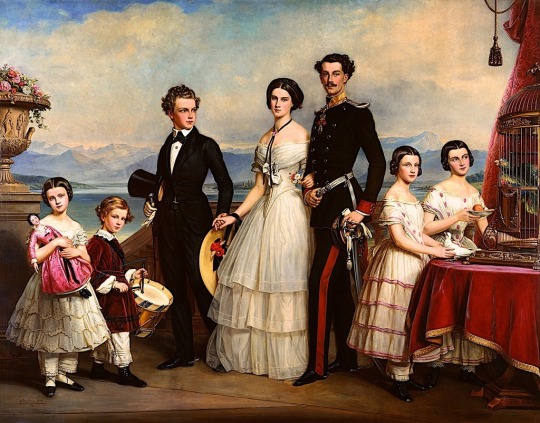
Duke Maximilian and Duchess Ludovika had a total of ten children, five girls and five boys. Their second son, Wilhelm Karl, sadly died at a month and half old, and their fourth son, Maximilian, was stillborn. The surviving eight children were (by order of birth): Ludwig Wilhelm, Helene, Elisabeth, Karl Theodor, Marie, Mathilde, Sophie and Maximilian Emanuel.

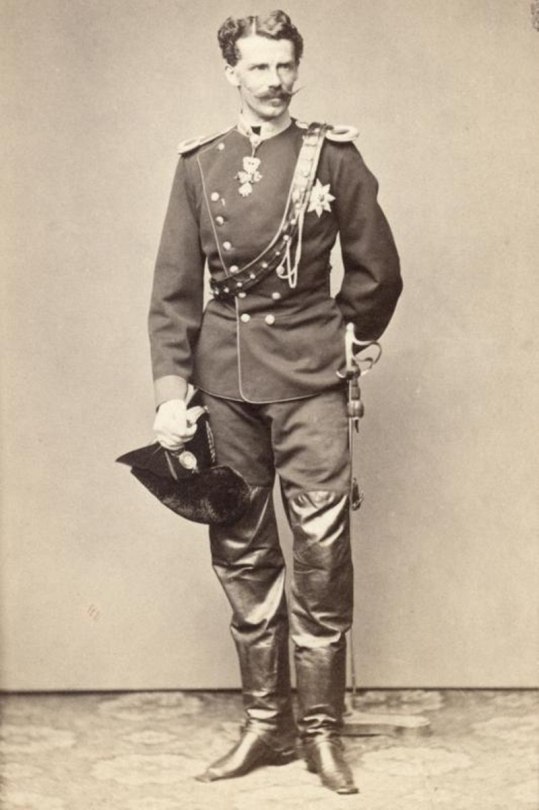
The eldest, Ludwig Wilhelm, born in 1831, was always known as “Louis” in his family. In 1858 he gave up his position as the future head of the Dukes in Bavaria branch in order to marry his mistress, former actress Henriette Mendel. He seems to have been somewhat difficult, at least judging by something Elisabeth told to her lady-in-waiting Countess Mária Festetics: “It is a good thing that Henriette is his wife, for anybody else would long since have left him, and he is happy with her.” What does this exactly mean I have no idea. Louis and Henriette had two children, Marie (born a year before her parents marriage) and Karl, who died as a baby. As was customary for Wittelsbach princes he did a military career, and in 1866 fought in the Seven Weeks War. We don’t really have much more information about him; many accounts about the Duke and his family that come after the Mayerling affair, in which his daughter Marie Larisch played a key role as the go-between Crown Prince Rudolf and Mary Vetsera, are heavily affected by the negative reputation that had befallen over her. His relationship with his sister wasn’t unaffected by this either, and he and Elisabeth became distant, though Elisabeth’s daughter Marie Valerie still wrote affectionately of her “Aunt Henriette”, so it may have been more out of a sense of awkwardness than Louis being directly blamed for the affair. He went to Elisabeth’s funeral, visibly affected by his sister’s death, and was one of the men who took her coffin to the Capuchin Crypt. A year after his wife’s death in 1891 he married actress Antonie Barth, forty years his junior. This marriage ended up in a divorce in 1913, after she had a child whom Louis claimed wasn’t his (I found some gossip articles about this on newspapers but that’s a whole rabbit hole I haven’t gone down yet). Ludwig Wilhelm died in Munich 1920, aged eighty-nine-years-old.
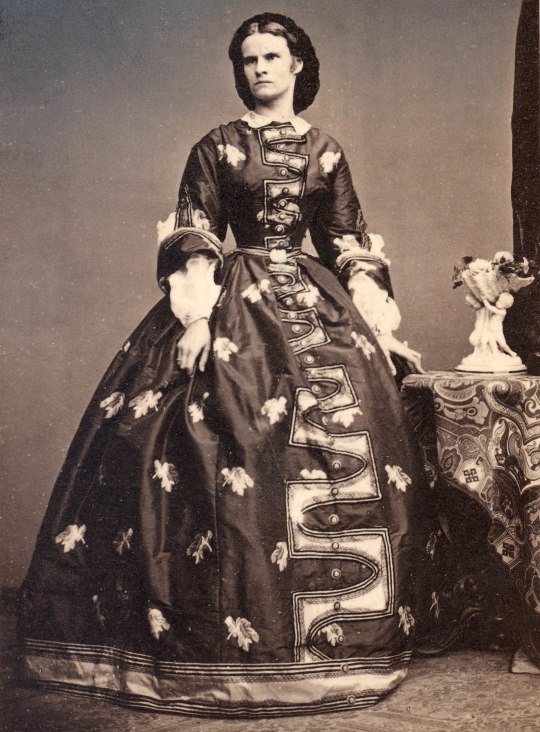

Born in 1834, the third child an eldest daughter, Helene, nicknamed “Nené” and “Lenza”, is probably the most known of Sisi’s siblings, and also the most misrepresented. She has gone down in history for being the disciplined, exemplary daughter that was groomed for years to become empress only to have “her fiancé” stolen by her younger sister. Except that none of this is true. In her old age Ludovika often complained that Helene had been a troublesome child who had caused her a lot of grievances. And it’s unlikely that Helene had ever expected, let alone been prepared, to become empress years in advance: not only there had been serious attempts to get Princess Anna of Prussia’s hand for Franz Josef in 1852 (why would they have done this if Helene was supposedly waiting in the wings to marry him?), but also when Ludovika was told that the emperor wanted to marry Sisi she became very emotional “for in her great modesty she had always doubted that the Emperor would really think in one of her daughters”.
By late 1857 Ludovika lamented that her daughter had pretty much become a spinster. But in the beginning of 1858 Helene met Maximilian, Hereditary Prince of Thurn und Taxis, and soon after he proposed. This marriage wasn’t well received by King Maximilian II, since the Taxis were subjects of the Bavarian king and therefore not equal to marry a Wittelsbach, but eventually King Max gave them the all-clear and they married. Reportedly the marriage was happy, but her husband sadly died only ten years later of an illness, and she fell into a deep grief. When Helene’s father-in-law died in 1871 she became the de facto head of the house of Thurn und Taxis until her son Maximilian reached the majority. Helene was sadly to suffer two more big blows in her life: in 1881 her daughter Elisabeth died of childbirth complications aged only 20-years-old, and in 1885 her son Maximilian died of cardiac problems aged only 24-years-old. Helene’s last years are said to have been very sad, since she never recovered from the untimely deaths of her husband and children. She died in 1890 at the age of 56, likely of cancer. At her deathbed were her two surviving children, Louise and Albert, and her sister Elisabeth.

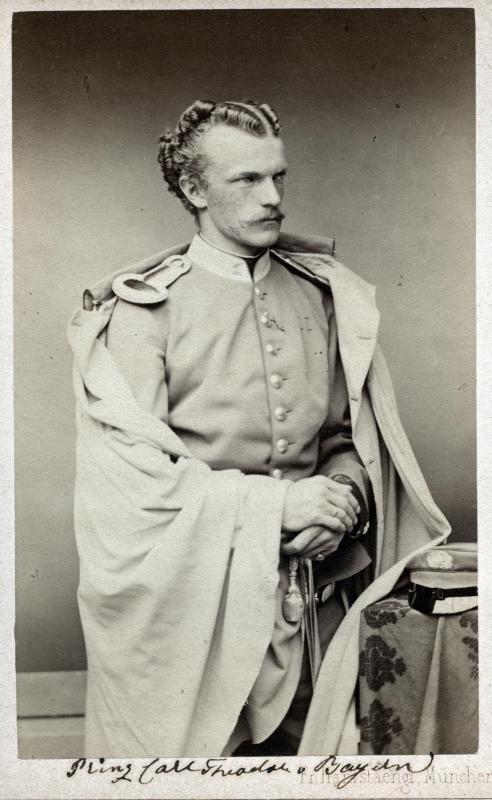
The fifth child and third son, Karl Theodor, called “Gackl” by his family, was Elisabeth’s favorite brother. He seems to have been a very charismatic man, since everyone that met him had nothing but good things to say about him. In 1865 he married his first cousin Princess Sophie of Saxony, and they had one daughter, Amalie. Sadly Sophie’s health was severely affected by childbirth, and died over a year later of influenza. Like his elder brother he also did a military career starting from a young age, and fougth in the Seven Weeks War. However, afterwards he left active service and went to the Ludwig Maximilian University of Munich, where he studied medicine. His studies were interrupted by the Franco-Prussian War, but he got his degree as a doctor in medicine, later specializing in ophtalmology. During this time Karl Theodor had remained a widower, but in 1874, seven years after his wife’s passing, he married Infanta Maria José of Portugal, daughter of the deposed King Miguel I of Portugal and seventeen years his junior. They had five children: Sophie, Elisabeth, Marie Gabrielle, Ludwig Wilhelm and Franz Josef. Gackl became a renowned oculist, and in 1895 he opened the Augenklinik Herzog Carl Theodor (Duke Carl Theodor Eye Clinic) in Munich, which exists to this day. He personally operated thousands of people, assisted by Maria José, and later also by his daughters. Karl Theodor died in 1909, a few weeks after his 70th birthday, from bronchitis.


While Helene is the most known of Elisabeth’s sister solely because everyone and their moms know the (incorrect) story of her being “rejected” by FJ, the sixth child and third daughter, Marie, is the most famous sister for her own merits. She was the last Queen of the Two Sicilies as the wife of King Francesco II, and has gone down in history for leading the resistance during the Siege of Gaeta, the last stand of the Bourbon dynasty in Naples. She was only nineteen when her husband finally surrounded, and lived in exile for the rest of her life. After ten years of marriage Marie and her husband had one child, Maria Cristina, who sadly passed away while still a baby. They tried to have more children, but all her pregnancies ended up in miscarriages. She spent the rest of her life traveling; when WWI broke she settled down in Munich, where she died aged 82 in 1925.
Marie has gotten an interesting reputation: she is either known for being the brave queen who stood up next to her troops until the end, or for being a haughty woman who deeply envied her imperial sister and lived full of resentment. The first is just one, although crucial, brief moment in her life; and the second is literally just what Mária Festetics, one of Elisabeth’s ladies-in-waiting, thought of her. Once I realized how little we actually knew about Marie, how much is just hearsay and speculation, she became fascinating to me, but sadly we still don’t have a good biography about her that uses primary sources instead of relying in gossipy second hand accounts.
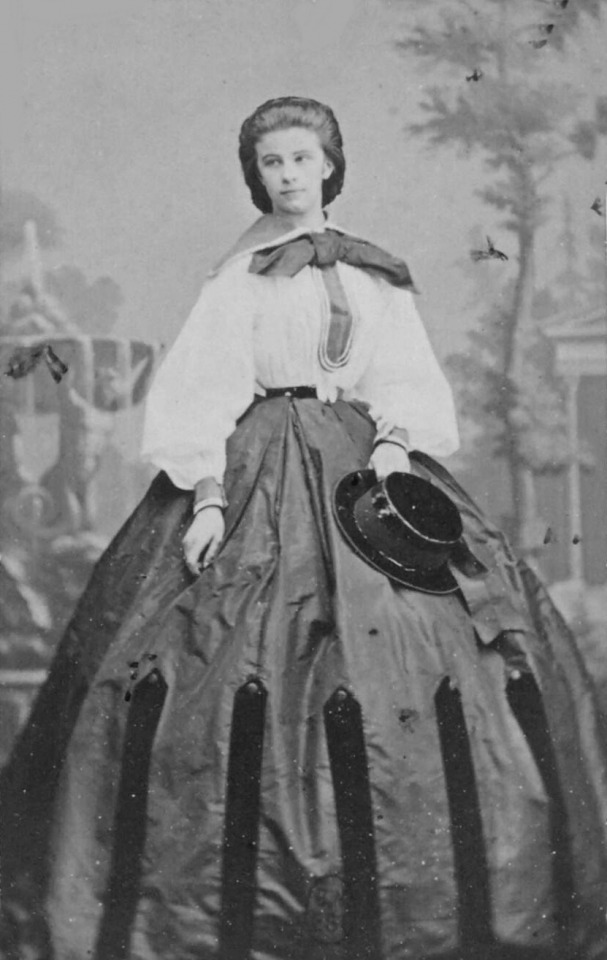

Mathilde, called “Spatz” (Sparrow), is the sister we have the least information of. She and Marie were the closest of the sisters; they were always together, and would often even dress the same (as you can see in the Stieler portrait). In 1861 Mathilde married Prince Luigi, Count of Trani, half-brother of Marie’s husband, and joined her sister in Rome, were the Bourbons in exile had settled their court. The marriage turned out to be unhappy, since her husband was an alcoholic and cheated on her, though they did had one child: Maria Teresa, called “Mädi”, born in 1867. Mathilde and Luigi separated eventually, though she did went to his aid and nurse him when he was sick. But the person she dedicated her life was her daughter, who for many years suffered from poor health (likely sclerosis); Mathilde took care of Mädi until her death, aged only 42. She spent the last years of her life with her sister Marie, and died only months after her, in 1925.


The youngest daughter, Sophie, born in 1847, is probably the most “romantic” of the Wittelsbach sisters. Just like Helene she has gone down in history for being a “rejected bride”, though in her case, it’s actually true. She was briefly engaged to her cousin Ludwig II of Bavaria, and it was an absolute disaster: he had no interest in marriage (not really that surprising when you consider that he was gay) and often publicly snubbed Sophie; she in turn was absolutely miserable because she felt he was playing with her. Ludwig kept postponing the wedding until Sophie’s father, Duke Max, send him an ultimatum, to which the king responded by just canceling it. As if these months hadn’t been stressful enough for Sophie, during this time she also had an affair with Edgar Hanfstaengl, the son of the court photographer. I don’t really know much about this liaison, only that she was aided by two ladies-in-waiting in order to meet him in private and that some love letters she wrote to him have survived. But whatever the extent of her feelings, the relationship could never become serious, and one year later she married Prince Ferdinand of Orléans, Duke of Alençon, a grandson of King Louis Philippe I of the French. I don’t know if this marriage was ever a love match or if Sophie simply wanted to settle down for good after all her failed romantic experiences; whatever the case they did have two children, Louise and Emmanuel. The Orléans had been living in exile in England since the deposition of Louis Philippe, and only after the fall of the Second French Empire in 1872 were they allowed to return to France. This probably improved Sophie’s mood, since she had suffered from depression since her children’s birth, and the English weather didn’t make her feel better.
After the death of her former fiancé Ludwig II in 1886, Sophie fell ill and on advice of her brother Gackl she searched for a treatment in Munich under a Dr Glaser. But while he treated her she fell in love with her doctor, who was also married with children. This time Sophie didn’t want to give up her enamored, and did something unthinkable for a woman of her status in the 19th century: she sought for a divorce from Ferdinand. Sadly things didn’t work out for her, because her husband, on the advice of her brother Karl Theodor, retaliated by having Sophie interned in a mental clinic for “moral insanity”, where she suffered the appalling “treatments” for mental illnesses of the time. After seven months she was considered cured, and allowed to leave the institution. She never again tried to divorce.
Sophie dedicated the last years of her life to charity work. In 1897 she was one of the organizers of the Bazar de la Charité, an annual charity event held in Paris since 1885, and was in the place when an accident set it on fire, taking the lives of 126 victims. She was one of the victims of the fire, and although she had the chance to leave she refused she refused to abandon the Bazar until everyone else was out, guiding and helping people to find the exist until her last moments. She had been fifty-years-old.


Lastly the youngest child Maximilian Emanuel, nicknamed “Mapperl”, is the brother we know the least about. Born in 1849, he was only two years and a half younger than his sister Sophie, whom he was the closest to: they were often referred as “die Kleinen” (the little ones). As his eldest brothers he did a military career, and fought both in the Seven Weeks War (aged only sixteen!) and in the Franco-Prussian War. At Sophie’s wedding he met and fell for a cousin of the groom, Princess Amalie of Saxe-Coburg and Gotha, which would have been great… if she hadn’t been already engaged to Prince Leopold of Bavaria. Here’s when things get a bit messy: according Briggitte Hamann, Elisabeth found out about the situation and decided to step in and free Mapperl’s beloved… by introducing her daughter Gisela to Leopold. Which is. Hmmm. A questionable thing to do. However, other authors claim that Elisabeth actually had nothing to do with that, specially considering that Mapperl’s wedding took place three years after Leopold and Gisela got engaged - if the goal was to make Amalie available, he definitely took his sweet time to make his move. One day I’ll look deep into it because I’m genuinely curious as to which is the truth; whatever the case, both couples had happy marriages, so good for them. Max Emanuel and Amalie had three sons: Siegfried, Christoph and Luitpold. Sadly Max Emanuel died quite unexpectedly in 1893 from an ulcer, aged only 43-years-old.
Again, this is only an introduction to the siblings, there’s far more information out there that I could possibly put in a single post. Thank you for your question! The Dukes and Duchesses in Bavaria are really interesting an I think they deserve the spotlight as much as their imperial sister.
#a lot of this i wrote from memory + copying my own previous posts + checking dates and names on wikipedia#so please forgive my lack of sources and sorry if there are mistakes!#house of wittelsbach#duke ludwig wilhelm in bavaria#helene in bavaria hereditary princess of thurn und taxis#karl theodor duke in bavaria#queen marie sophie of the two sicilies#mathilde in bavaria countess of trani#sophie in bavaria duchesse d'aleçon#duke maximilian emanuel in bavaria#asks
17 notes
·
View notes
Text

Beaker of the Polin Jewish Burial Society, Bohemia (Czech Republic), 1691
In 1584, the Hapsburg emperor Rudolf II moved his court to Prague. During his reign, the Bohemian capital became a center of Renaissance art and scholarship, attracting artists and scholars from all over Europe. Among them were specialists in the arts of cutting and painting glass. The popularity of decorated glass among members of the court influenced other groups-guilds, societies, and noble families to create similar pieces.
76 notes
·
View notes